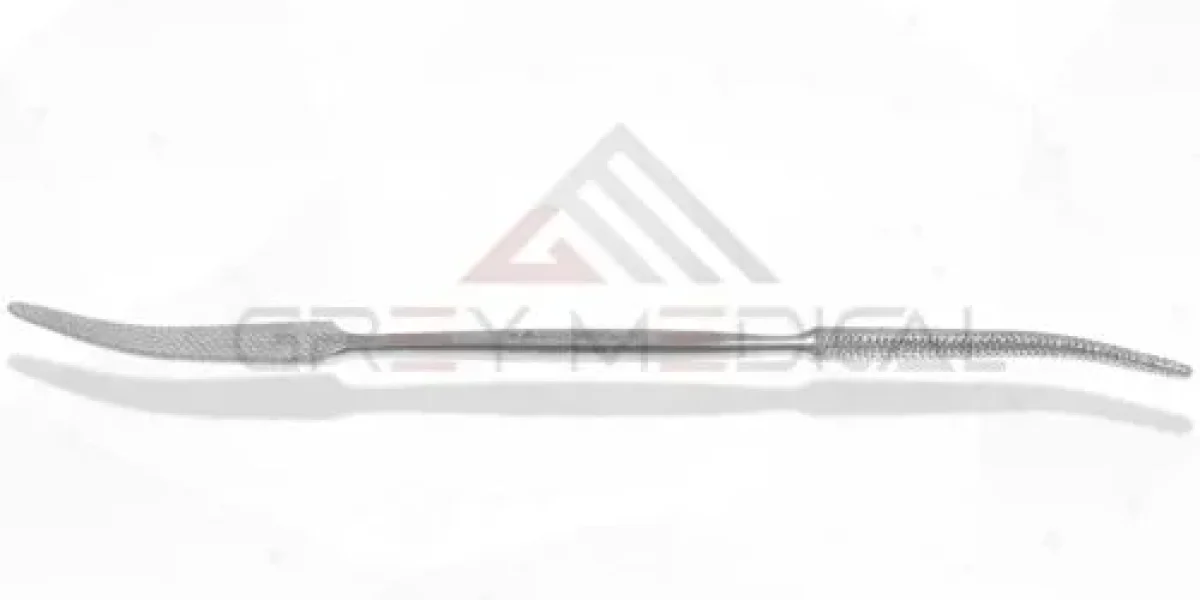Precision and care are the cornerstones of successful surgeries, particularly in orthopedics where delicate work on bones is required. Among the range of instruments used by surgeons, surgical bone rasps are essential tools that enable precise shaping and smoothing of bone surfaces. Their design and purpose make them indispensable in various medical procedures, ensuring optimal outcomes for both surgeons and patients.
What Are Surgical Bone Rasps?
Surgical bone rasps are specialized instruments crafted to aid in bone filing and remodeling. These tools are typically made from high-grade stainless steel, designed to withstand the rigors of surgical procedures. Featuring a textured or serrated surface, bone rasps are tailored to gradually remove bone material and refine the contours of the target area. Whether reshaping a surface or preparing a bone for implantation, surgical bone rasps provide the precision required for intricate orthopedic tasks.
The Importance of Bone Rasps in Orthopedics
Orthopedic surgeries often require the alteration of bone structures to restore function or repair damage. Surgical bone rasps play a key role in these procedures by allowing surgeons to sculpt bone surfaces with accuracy. For example, in reconstructive surgeries or joint replacements, the use of these tools ensures that the bone bed is properly prepared to integrate with prosthetic implants. The ability to achieve precise shaping directly impacts the success and longevity of the surgery.
Unique Features of Surgical Bone Rasps
The design of bone rasps incorporates several features that enhance their effectiveness. Each rasp is available in various shapes and sizes, such as curved or flat profiles, to match the surgical need. The serrated teeth on the instrument’s surface are finely engineered to permit smooth and controlled removal of bone tissue. Additionally, ergonomic handles ensure stability and control during use, reducing strain for surgeons during lengthy procedures.
Applications of Bone Rasps Across Medical Fields
While surgical bone rasps are predominantly used in orthopedics, their utility extends to other fields such as maxillofacial and reconstructive surgery. For instance, during facial reconstructive procedures, these tools are vital for contouring bones to achieve the desired structural alignment. Similarly, in spinal surgeries, bone rasps can be used to prepare vertebrae for fusion or to correct deformities. This versatility has solidified their importance in diverse surgical disciplines.
Benefits of Using High-Quality Bone Rasps
The choice of surgical bone rasps can significantly influence the quality of a procedure. High-quality rasps provide smoother operation and reduce the risk of unintended damage to surrounding tissues. Their durability ensures consistent performance, even during demanding surgeries. Furthermore, the precision they offer contributes to quicker recovery times and improved patient outcomes, making them a valuable asset in operating rooms worldwide.
The Evolution of Bone Rasp Technology
Advancements in medical technology have led to continuous innovation in the development of surgical instruments, including bone rasps. Modern variations of these tools now incorporate enhancements such as improved materials for durability and sharper cutting surfaces for greater efficiency. Specialized designs aimed at minimizing surgical trauma have also emerged, illustrating the ongoing efforts to refine and optimize surgical bone rasps for evolving clinical needs.
Surgical bone rasps remain a fundamental element of orthopedic and reconstructive surgery, offering the precision and control necessary for complex bone remodeling tasks. Their adaptability, combined with thoughtful design, ensures that they will continue to be a trusted tool for surgeons as medical techniques and technologies progress.












